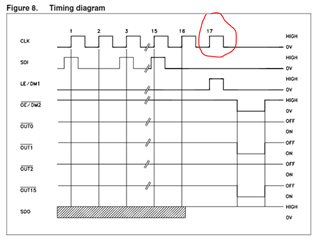Hi Experts,
May I ask for help? Our customer is looking for alternate pin to pin drop and replacement for STP16CP05XTTR. They have found out the possible option might TLC5926IPWPR/TLC5927IPWPR. May I ask if you can also confirm if they can use these parts without any HW/SW change? Or is there a more suitable TI part as an alternative? I also tried to check a possible alternative with BOM & cross reference tool but was not able to find a direct replacement.
I hope you can help us. Thank you so much in advance.
Kind regards,
Gerald
-
Ask a related question
What is a related question?A related question is a question created from another question. When the related question is created, it will be automatically linked to the original question.


